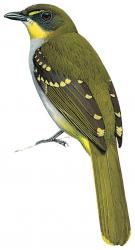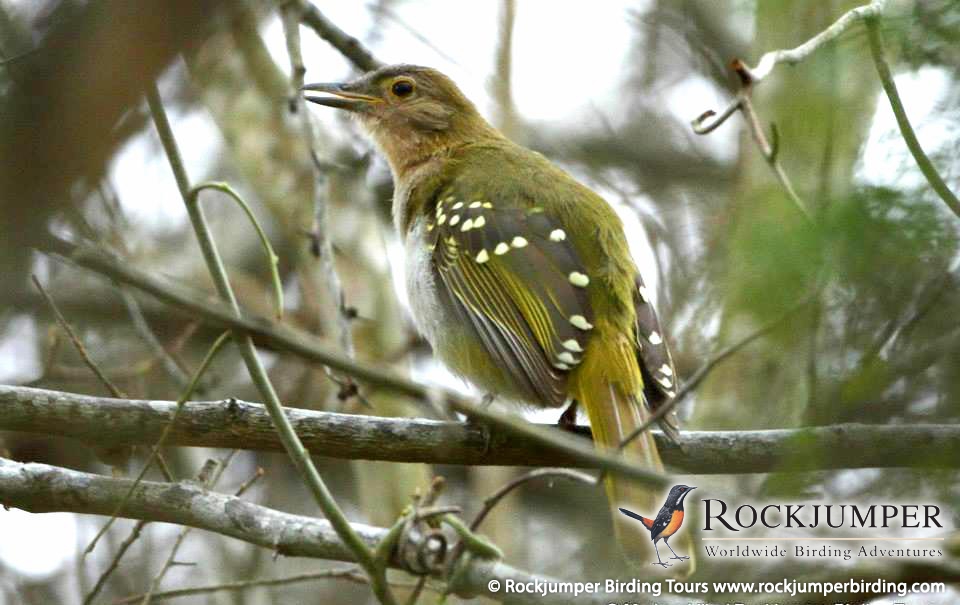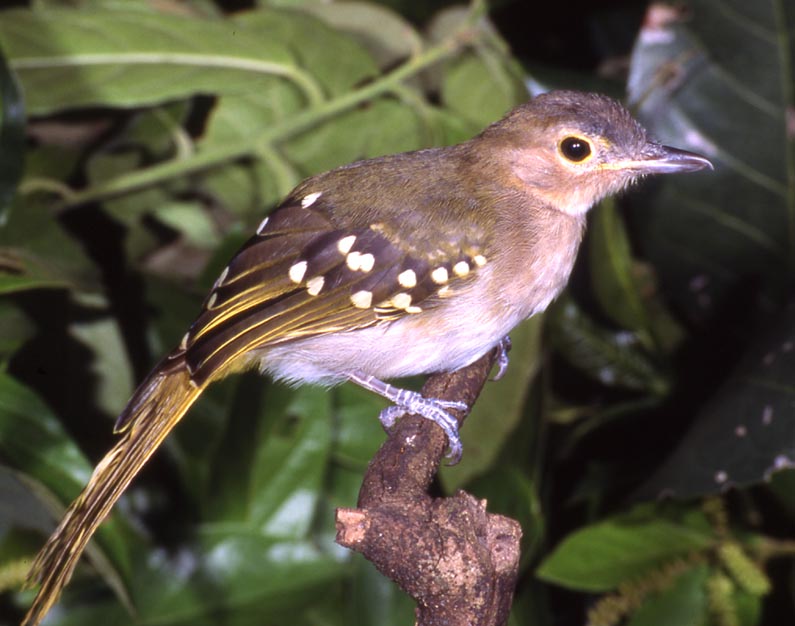
Nicator vireo
TAXONOMY
Nicator vireo Cabanis, 1876, Chinchoxo, Portuguese Congo.
TAXONOMY
unresolved. The genus has been placed in the bushshrikes
(Malaconotidae), other authors place it in the Pycnonotidae.
OTHER COMMON NAMES
French: Bulbul а gorge jaune; German: Gelbkehlnicator; Spanish:
Bulbul de Garganta Amarilla.
PHYSICAL CHARACTERISTICS
5.5 in (14 cm); 0.88 oz (25 g). Upperparts dark green, head
tinged gray. Short yellow stripe above the eye, bordered on top
with a black line, cheeks grayish. Yellow throat, undertail
greenish yellow, yellow tip on tail. Conspicuous yellow wing
spots. Sexes alike. Juvenile resembles adult, but greener forehead
and less yellow on throat.
DISTRIBUTION
Central Africa; Cameroon, Gabon, Congo, Angola, and
Zaire.
HABITAT
Lowland forest, especially vegetation near clearings.
BEHAVIOR
Territorial, lives in pairs, sedentary. Very shy, sings from dense
cover. Song of up-and-down whistles with soft in-between notes
“po-tyoo-ho-ho-ho-whee, tyoo-ho-ho-ho.” Nonmigratory.
FEEDING ECOLOGY AND DIET
Mainly insects, especially large dragonflies, also caterpillars,
beetles, and mantids. Forages in dense clumps of vegetation
near clearings.
REPRODUCTIVE BIOLOGY
Apparently monogamous; holds same breeding territory for
several years. Nest often exposed, two grayish eggs spotted
with yellow, red, and gray; spots form “cap” on end. Incubation
by female, while male stays nearby and sings. Young fed
by both parents.
CONSERVATION STATUS
Not threatened. Locally common.
SIGNIFICANCE TO HUMANS
None known.
Photo Gallery of - Yellow-throated nicator




 Animalia Life
Animalia Life